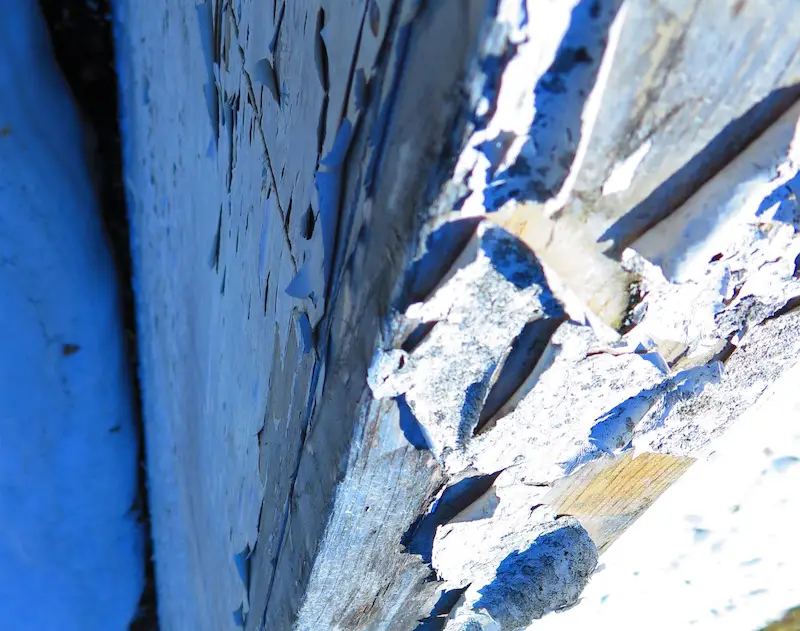Q: When the outside of my home was painted three years ago, the painter insisted on oil-based paint instead of latex. Now the paint is peeling. How do I proceed and what’s the best paint for the job?
Reading Time = 2 1/2 minutes

A: Based on how soon your paint peeled, chances are that your paint would have peeled no matter what was used, but let me start with a little background.
Old ideas die hard, and that’s the reason even some professional painters still believe that oil paints are more durable than latex. Once upon a time they were, but according to the people who manufacture paint (and I talk to them frequently), top-quality latex beats oil-based paints hands-down in exterior conditions. The best formulations today are 100% acrylic latex, and they’ll last for several decades when chosen and applied properly over a coat of high-quality latex primer.
4 Steps to Exterior Painting Success:
- The first step in your case is to make sure there are no moisture problems associated with your walls. No paint can resist the movement of interior water vapour coming out of wood to the outdoors. I’ve seen a number of older homes with wood siding that have moisture migrating from inside out. Frost and condensation builds up inside wall cavities during winter, then the moisture migrates out through the wood during warm months. No paint can resist peeling if moisture is moving out of the wood. If some areas have peeled a lot, and other areas not so much or not at all, this strongly suggests moisture movement is at least part of your problem.
- Next, bring all surfaces back to bare wood. This involves a chemical stripper, scrapers, a pressure washer and a lot of work. I like to pressure wash wooden surfaces, let the wood dry completely, then sand with an 80-grit abrasive (nothing finer) in a 6-inch random orbit sander.
- The same procedure should be followed even on old, weathered wood. The surface of this kind of wood looks thirsty and able to absorb paint, but weather wood has loose surface fibres that can pull away from the underlying wood and allow peeling. Sanding lightly to remove the loosened fibers and get rid of the grey colour does wonders for paint durability. This sanding step is often overlooked, but key.
- Next, apply acrylic latex primer, followed by the best 100% acrylic exterior latex paint you can find.
There are more details to successful outdoor painting and you can learn about them here in more detail.
 I hope you found this article useful. Please consider helping me create and publish articles like this one. Click the “buy me a coffee” button at the link below for a safe, simple and fast way to make a contribution. Thank you for helping me keep this website up and running!
I hope you found this article useful. Please consider helping me create and publish articles like this one. Click the “buy me a coffee” button at the link below for a safe, simple and fast way to make a contribution. Thank you for helping me keep this website up and running!


